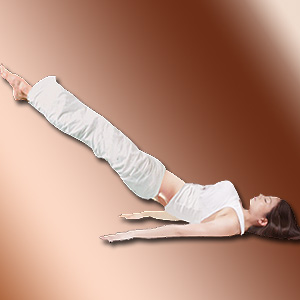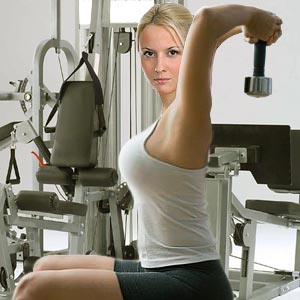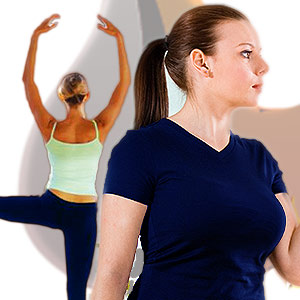Five Tibetan Rites

If you are looking for a powerful and effective exercise which requires fifteen minutes every day - five short and simple exercises sans special equipment with the ease of doing it anywhere, home, office, park or beach, then 5 Tibetan Rites is appropriate.
Beneficial to men and women, children and the elderly, the five Tibetan Rites aims at well-being of body and mind. An exercise regimen even if combined with routine yoga or any form of physical workout, the five Tibetan Rites extends plenty of goodness.
Check why five Tibetan Rites is referred as 'fountain of youth' and how as an exercise regimen it results in extraordinary health benefits including youthful look, energetic feeling and mental wellbeing.
Five Tibetan Rites
Learning about the origin of Five Tibetan Rites may add more value in understanding the core principles of Tibetan Yoga. Some 2, 500 years ago, Five Tibetan Rites are said to have originated in Tibet and practiced by Buddhist Monks of the region. A book titled 'The Eye of Revelation' authored by Peter Kelder reveals how the exercise in its present form was introduced.
Referring to the book, it is understood that the exercise regimen would have remained a secret with the Lamas if a retired British Army Officer wasn't driven by curiosity to search for the lamas in the Himalayas and spend two years with them learning the yoga.
Soon, he was relieved of backache and arthritis and looked much younger than his age. He termed these exercises as the Five Tibetan Rites which closely resemble Tibetan Yoga practiced by the Lamas, similar to the series of yoga that originated in India. The emphasis of 5 Tibetan Rites is on the sequence of motion.
He was convinced that the exercises immensely contributed to reversing the aging process which helped to live long and healthy, stay young and vibrant; besides improving vitality and mental well-being.
Over the decades, the exercise has gained popularity and is practiced around the world. Practitioners find it an easier method to keep body in shape especially when a physical workout or a complete yoga routine is unthinkable due to paucity of time or other obligations.
Considering remarkable benefits one can gain, more and more people are motivated to take up five Tibetan Rites as an exercise regimen. In all, there is a positive change in mental and physical health.
- Feel more energetic and fresh
- Increased physical strength/Vitality
- Relief from nervous stress
- Improvement in respiration
- Bone Mass enhancement
- Improved digestion
- Reduction/elimination of fat around midsection
- Strengthening of core muscles
- Relief from back pain and muscular tension
- Strengthening of spine
- Better memory
- Greater mental alertness
- Good for cardiovascular system
- Oxygenates the body and higher metabolism
- Detoxification of body.
- Assist in detoxifying the body
- Improved posture
- Sound sleep
- Improved vision
- Relief from arthritis.
- Retaining youthful looks.
The way Five Tibetan Rites works
It is based on the fundamental belief that the world is composed of five elements namely, water, earth, air, fire and spirit (energy). Each rite is closely connected to one of the five elements.
There is another concept, the chakra connection. The ancients in India, and Tibet, two of the oldest cultures believed that the spiritual body is connected to physical body by 7 Chakras. The word Chakra is a Sanskrit word meaning 'wheel' or 'vortex'. The seven psychic vortexes or chakras are located throughout the body. Two in the brain region, one in the throat area, one in the liver, one in the reproductive organs and the other two are found in each of the knees.
The Lamas believed that each energy vortex tends to become less energized with age. When the energy in the chakras begins to decline, aging occurs. The decline would lead to deterioration of endocrine glands and critical hormones they produce. Soon, a chain of events becomes inevitable resulting in deterioration in body systems.
The five Tibetan rites is a compilation of 21 different movements. It has been condensed to five rites. Performing the rites daily will activate the 7 chakras, literally speed up the spinning of the chakras and distribute pure energy to the endocrine system. In the process, the entire body benefits. There is a complete and healthy balance between the seven different points of the body. Thus, the Five Tibetan Rites re-energize the chakras and rejuvenate the body.
Five Tibetan Rites is also referred to as Fountain of Youth. The five Tibetan rites assist in normalizing hormonal imbalances in the body. Medical research has ample evidence to indicate that the aging process is hormone-regulated. When the hormonal imbalances are corrected, it reflects in retained health and youth.
However, millions of practitioners accept it as an exercise regimen with realistic expectations such as increased energy, stress reduction, an enhanced sense of calm, clarity of thought, increased strength and flexibility and an overall improvement in health and well-being.
Five Tibetan Rites procedure
The five rites consist of three components.
Movement: Execution of physical activity
Relaxation: Resting after exercise
Meditation: Affirmations that are repeated during the exercise and relaxation parts.
The first few days, when you practice, pay additional attention to recognizing the three components. Soon, it will become part of the exercise regimen. To get most out of Five Tibetan Rites, allot a specific time, preferably in the morning to perform these exercises.
- Learn and focus on doing the rites correctly.
- Practice in a well-ventilated place with ample air movement.
- Never do it on bare floor or on the carpet. Use a 'yoga mat'.
- Perform before breakfast. A glass of water is good enough.
- If not in the morning, do not eat at least four hours before practice.
- Don't rush. Do it slowly.
- Skipping one day in a week is acceptable.
- If hard pressed for time, reduce the number of repetitions.
- Remember to combine breathing with the movements.
- Be aware of body response and never strain too much.
- Take rest if unwell.
- If under medication, consult health care provider before starting.
- Pregnant women should practice under the supervision of a Yoga Instructor or Ayurvedic physician.
Goal: The goal is to ultimately practice each movement 21 times. But don't feel pushed to reach the goal in a short period of time. Instead ensure not to skip. In the first week, practice three repetitions of each exercise. Be aware of body response. Gradually increase the repetitions. Add two repetitions each week. At this rate, after 10 weeks, you would be performing 21 repetitions of every rite in 10-20 minutes. Doing more than 21 repetitions hasn't proved to be useful. 21 seem to be the magic number.
Alternatively, you can find a suitable progression that works well. But do all the rites. The rites work in conjunction with each other. Hence, it is important to do all of them each time. Within a month, you will notice remarkable improvement in mental and physical health.
Rite 1 (Energy): The Spin posture replenishes and energizes the body and mind.
- Stand erect with arms outstretched, horizontal to the floor.
- Spin around clockwise.
- To avoid feeling dizzy, keep eyes fixed on one point. (Ex: the right hand little finger).
- Rest a few second or more.
- Relax muscles before you start the next rite.
Rite 2 (Air): The leg raise posture promotes clear, focused thinking.
- Lie flat on the floor, face up.
- Fully extend arms along the sides.
- Place the palms against the floor.
- Keep fingers close together.
- Now, raise head off the floor, tucking the chin against the chest.
- Simultaneously lift the legs, knees straight, into a vertical position.
- Try and let the legs extend back over the body, toward the head.
- Do not let the knees bend.
- Slowly lower both the head and the legs, knees straight, to the floor.
- Allow all the muscles to relax, continue breathing in the same rhythm.
- Breathe in deeply while lifting legs and breathe out as you lower legs.
- Rest and relax muscles before you repeat/move to the next rite.
Rite 3 (Water): The kneeling backbend posture unlocks the power of the subconscious.
- Kneel on the floor with the body erect.
- Place the hands against the thigh muscles.
- Incline the head and neck forward.
- Tuck the chin against the chest.
- Now, throw the head and neck backward, arching the spine.
- You can brace the arms and hands against the thighs for support.
- Breathe in deeply as you arch the spine.
- After the arching, return to the original position.
- Breathe out as you return to an erect position.
- Rest and relax muscles before you repeat/move to the next rite.
Persons who are extremely overweight are advised not to do Rite #4 and #5 until they have developed some strength and endurance.
Rite 4 (Earth): The tabletop posture creates stability and balance.
- Sit on the floor with legs straight out.
- Let the feet be apart by about 12 inches.
- Keep the trunk of the body erect.
- Place the palms on the floor alongside the buttocks.
- Now, tuck the chin forward against the chest.
- Drop the head backward to the maximum/comfortable extent.
- Simultaneously, raise the body so that the knees bend while the arms remain straight.
- Check if trunk of the body is in a straight line with the upper legs and is horizontal to the floor.
- Stiffen or tense every muscle in the body. Breathe in.
- As you return to the original sitting position, relax the muscles and breathe out.
- Rest before repeating the procedure.
Rite 5 (Fire): The pendulum posture focuses on finding the motivation, courage and energy to follow one's intuition.
- Lie flat on your stomach.
- Inhale and raise the upper body.
- Straighten arms and throw the head backwards.
- Breathe out and relax.
- Inhale again.
- Move your pelvis upward and your head down.
- Exhale and return to starting position.
- Repeat the rite.
Finishing the rite
After completing the last rite, it is important to let the body and mind relax in order to gain full benefits of the exercise. Lie down on the floor on your back with your arms either stretched out, palms up, or at your side, palms up. Relax your spine and neck into the floor. Take slow, deep breaths to empty your mind and relax your body. When you are ready, slowly bring yourself into a sitting position. You are ready for the next activity of the day.
Combining five Tibetan rites with a brisk walk on a daily basis is a fabulous way to ensure that you remain healthy and feel younger than you have felt in years.
Top of the Page: Five Tibetan Rites
Tags:#Five Tibetan rites #Tibetan rites exercise

Posture Correction
Qigong Exercises
Five Tibetan Rites
Piloxing Workout
Calisthenics
Karate For Women
Self Defense for Women
Krav Maga
Circuit Training
Interval Training
Hybrid Workouts
Barre Workout
Eskrima Workout
Learn Tai Chi
Indoor Rock Climbing
Reducing Body Fat Percentage
Fat Burning Zone
PACE Progressively Accelerating Cardiopulmonary Exertion
Non-exercise Activity Thermogenesis
Women Fitness
Morning Exercise and Metabolism
Choosing Fitness Center
Fitness Center for Women
Fitness Weight Loss in women
Home Fitness Equipment
Kid Fitness
Gym Safety Tips
Building Lean Muscle
Lose Belly Fat
Flat Belly Tips
Exercises for Women

Toned Arms for Females
Hip Flexor Strengthening
How to lose Muffin Top
Plyometric Exercises
Flexibility Exercise Program
Belly Bloat
Body Sculpting Exercises
Core Strengthening Exercises
Core Strengthening Benefits
Exercise for Seniors
Fitness Exercise Articles
Anti Aging Exercise
Rebounder Exercise
Jogging Exercise
Flat Stomach Exercise
Knee Exercise
Butt Exercise
Weight Exercises for Women
Chest Exercise for Women
Stretching Exercise
Lower Back Exercise
Hip Exercises
Leg Exercise
Abdominal Exercise
Face Workout
Face Exercises Benefits
Double Chin Exercise
Eye Exercise Benefit
Thigh Exercises
Stair Climbing Exercise
Isometric Exercise
Pilates Exercise
Magic Circle Exercises
Rotator Cuff Exercises
Arm Exercise
Kegel Exercises for Women
Carpal Tunnel Exercises
Exercise Equipment
Xiser Workout
Foam Rolling Exercises
Rowing Exercise Machine
Elliptical Machine Benefits
Stepper Exercise Machine
Dumbbell Exercise
Weight Loss Calculator
Strapless Heart Rate Monitor
Home Exercise Equipment
Recumbent Exercise Bike
Resistance Exercise Band
Weight Lifting Exercise
Ball Exercise
Kettlebell Exercises
Medicine Ball Exercises
Swiss Exercise Ball
Kamagon Ball Workouts
Top of the Page: Five Tibetan Rites
Popularity Index: 101,051

